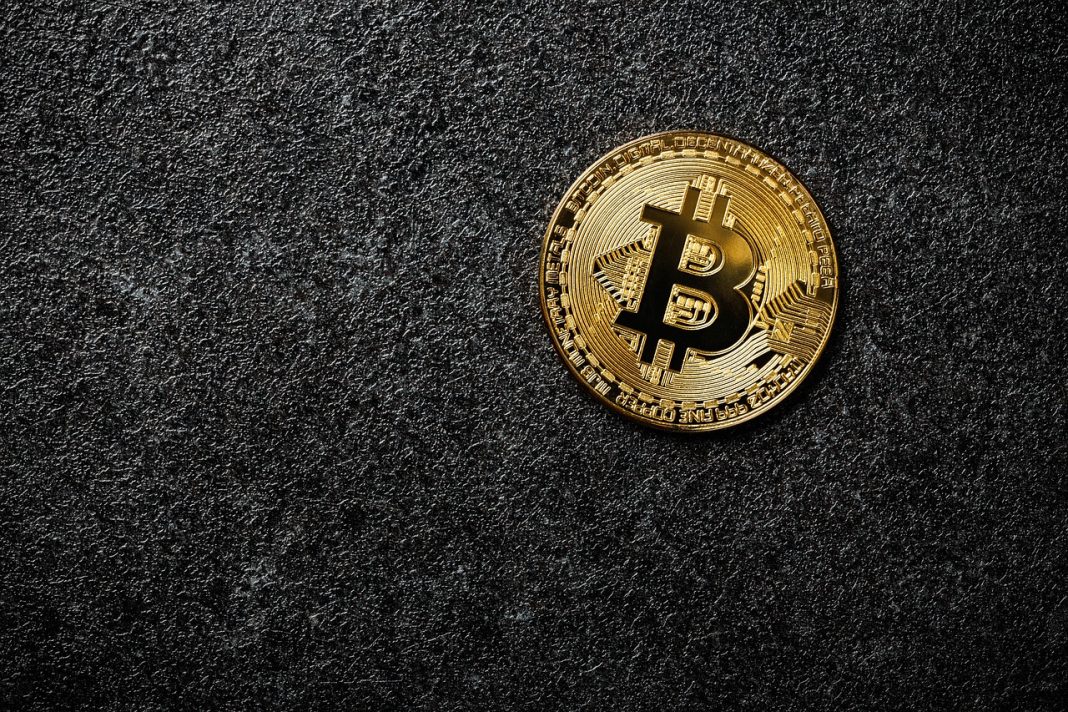Welcome to a crucial conversation about the digital currency that’s been making waves since its inception – Bitcoin. While hailed for its innovation and potential to revolutionize financial systems, Bitcoin comes with concerns that extend beyond economics and into our environment. Let’s delve into the pressing issues at hand.
Understanding Environmental Concerns with Bitcoin Mining
Bitcoin mining, the process by which new bitcoins are entered into circulation, is known for being power-hungry. This procedure involves solving complex mathematical puzzles, which requires an immense amount of energy. The environmental concerns arise from the fact that much of the electricity used is sourced from fossil fuels. These fuels release carbon emissions, contributing to climate change and harming ecosystems. It’s not just the air quality that’s at stake; the sheer amount of electronic waste generated by the short lifespan of mining equipment also adds to the environmental toll.
The Importance of Environmental Consciousness in the Bitcoin Community
As Bitcoin continues to grow in popularity, the sustainability of its practices becomes more significant. Environmental consciousness within the Bitcoin community is not just about “going green” – it’s about ensuring the longevity and ethical responsibility of the cryptocurrency. By reducing its environmental footprint, Bitcoin can pave the way for a more sustainable future in fintech. Moreover, as regulatory scrutiny around the environmental impacts of cryptocurrencies increases, the community’s proactive stance on these issues could help shape positive perceptions and policies.
The Purpose of This Blog Post
The purpose of this blog post is to shed light on the intersection of Bitcoin and environmental health. We’ll explore the current state of environmental affairs in Bitcoin mining, underscore why it’s imperative for the community to rally around sustainable practices, and discuss the various initiatives already taking place to address these challenges. Through this post, we aim to inform, inspire, and ignite a conversation that leads to actionable change within the world of Bitcoin and beyond.
Environmental Impact of Bitcoin Mining
As we continue our exploration into the environmental consciousness within the Bitcoin community, it’s crucial to understand the core of the issue: the energy-intensive nature of Bitcoin mining. But what does that really mean?
The Energy-Intensive Nature of Bitcoin Mining and Its Environmental Implications
Bitcoin mining, at its heart, is a process which involves powerful computers solving complex mathematical problems to verify transactions on the Bitcoin network, a process known as proof-of-work (PoW). This system secures the network but requires a significant amount of computational power. The “miners” who complete these calculations are rewarded with newly minted bitcoins, incentivizing a competitive race to solve these puzzles.
However, the environmental implications of this energy consumption are considerable. The competitive nature of mining means that miners are continuously upgrading their equipment to more powerful and energy-demanding machines to stay ahead. As a result, the total energy usage of the Bitcoin network is substantial, often compared to the energy consumption of entire countries.

What’s more, the source of this energy plays a vital role in determining the environmental impact. In regions where coal or other fossil fuels are the primary energy sources, the carbon footprint of Bitcoin mining can be particularly troubling. This has led to growing concerns about the sustainability of Bitcoin as a currency, especially given the global push towards reducing greenhouse gas emissions to combat climate change.
Analysis of the Carbon Footprint and Electricity Consumption
When it comes to the carbon footprint, numbers speak volumes. Reports suggest that the Bitcoin network’s annual electricity consumption rivals that of some industrialized nations. The carbon emissions associated with Bitcoin mining are also noteworthy, contributing to the overall global carbon emissions at a time when reduction is imperative.
These figures have raised eyebrows across the globe, prompting discussions on the necessity of such energy expenditure for digital currency. Some argue that the benefits of a decentralized currency are worth the cost, while others call for immediate reform to align Bitcoin’s operations with environmental sustainability goals.
Specific Environmental Challenges Posed by Bitcoin Mining
It’s not just the air that feels the weight of Bitcoin mining; there are other specific environmental challenges as well. Water usage, for example, is another concern. Cooling systems for large-scale mining operations often require vast amounts of water, which can strain local resources, especially in arid regions.
Landscape disruption is another issue, as mining facilities sometimes occupy large tracts of land, potentially affecting local ecosystems and wildlife. The production and disposal of mining hardware also contribute to electronic waste, further exacerbating environmental concerns.
It’s clear that Bitcoin mining’s environmental footprint extends beyond just high energy consumption and carbon emissions. These challenges paint a picture of the multi-dimensional nature of the environmental impact that the Bitcoin community must address.
As we move forward, the Bitcoin community’s response to these challenges through various initiatives becomes ever more relevant. By understanding the gravity of the situation, we can appreciate the efforts being made and the importance of continued innovation and responsibility in this space.
Existing Environmental Initiatives in the Bitcoin Community
As we delve into the proactive side of Bitcoin’s environmental narrative, one might wonder: What are the current efforts within the Bitcoin community to rectify its carbon footprint? The community has not turned a blind eye to the environmental concerns; in fact, several initiatives have been set in motion to address these very issues.
Exploration of Current Initiatives and Projects Aimed at Mitigating the Environmental Impact of Bitcoin Mining
The first ray of hope comes from the increasing adoption of renewable energy sources for Bitcoin mining operations. Across the globe, miners are tapping into solar, wind, and hydroelectric power to fuel their computational endeavors. These green solutions not only reduce greenhouse gas emissions but also offer the potential for cost savings over time. Moreover, projects like the ‘Crypto Climate Accord’—inspired by the Paris Climate Agreement—aim to decarbonize the cryptocurrency industry by transitioning to net-zero emissions by 2040.
Another commendable initiative is the development of more energy-efficient mining hardware. Innovators in the field are engineering ASIC miners that promise higher hash rates with lower energy consumption, thus improving overall efficiency. Efforts are also underway to recycle heat generated from mining operations, using it to warm buildings and industrial processes, thereby converting waste into utility.
Examination of the Motivations and Goals Behind These Initiatives
The driving force behind these environmentally-focused projects stems from a mixture of ethical responsibility and economic pragmatism. The Bitcoin community is becoming increasingly aware that sustainable practices could enhance the cryptocurrency’s reputation and alleviate regulatory pressures. These initiatives are not just about doing good; they’re about ensuring the long-term viability of Bitcoin as a leading digital currency.
The goals are clear and ambitious: to reduce the environmental impact of Bitcoin mining, to foster a more sustainable model of operation, and to set an example for other industries. Additionally, there’s an underlying hope that these efforts will encourage broader participation in the Bitcoin ecosystem by attracting environmentally-conscious investors and users.
Case Studies Highlighting Successful Environmental Consciousness-Promoting Efforts Within the Bitcoin Community
A shining example of success is the story of a mining company in Scandinavia that utilizes excess hydropower to run its operations. With abundant renewable energy, the firm operates with nearly zero carbon emissions, setting a benchmark for others to follow.
In North America, a group of miners has taken the innovative step of partnering with a gas company to use flared natural gas—a byproduct often wasted through burning—as a power source for mining rigs. This not only reduces methane emissions but also transforms a previously discarded resource into valuable computing power.
Last but not least, the emergence of blockchain-based platforms that incentivize renewable energy usage is worth noting. These platforms reward miners who prove they are using green energy, creating a market-driven approach to promote sustainability within the Bitcoin community.
Benefits and Challenges of Environmental Initiatives
In the journey toward a more sustainable future, the Bitcoin community has begun to weave environmental consciousness into its very fabric. But what are the tangible benefits of such integration, and what hurdles must be overcome to make these initiatives truly effective?
Potential Benefits of Eco-Conscious Bitcoin Practices
The benefits of embedding environmental awareness within the Bitcoin community are multifaceted. Firstly, utilizing renewable energy sources for mining not only reduces greenhouse gas emissions but can also lead to long-term financial savings as renewables become more cost-effective. Secondly, the development of more efficient mining hardware significantly decreases the electricity demands of Bitcoin operations, reflecting both a reduction in costs and environmental strain.
Another crucial benefit is the enhancement of public perception. As the general populace becomes increasingly eco-conscious, green practices by Bitcoin miners could boost the currency’s reputation, potentially leading to broader adoption. Moreover, environmentally friendly approaches can foster a sense of community and collaboration among miners, developers, and users who share a common goal of sustainability.
Finally, implementing eco-friendly measures can spur innovation and competitiveness within the industry. Companies that prioritize sustainability may attract new investors and customers looking to support businesses with green credentials. Thus, the shift towards environmental consciousness isn’t just good for the planet; it’s potentially beneficial for the bottom line too.
Challenges Facing Green Initiatives
Despite the apparent upsides, the path to greener Bitcoin practices isn’t without its obstacles. One significant challenge is the initial cost and investment needed to transition to renewable energy sources or to develop and deploy energy-efficient hardware. For many miners, especially those in regions with cheap fossil fuels, the short-term economic incentives to switch to greener technologies may seem insufficient.
There’s also the issue of scale and infrastructure. Bitcoin mining is a global activity, and not all regions have the same access to renewable energy sources or the latest technologies. This uneven playing field can hinder the widespread adoption of environmentally conscious practices.
An additional challenge comes from the complexity of measuring impact. It’s difficult to quantify the precise environmental benefits of certain initiatives, making it harder to motivate and sustain these efforts. Furthermore, the decentralized nature of Bitcoin means there’s no central authority to enforce or promote such measures, relying instead on collective action which can be difficult to coordinate.
Implications for the Bitcoin Ecosystem
The road to greener Bitcoin mining is not just about overcoming technical and financial barriers; it’s about shaping the future of the ecosystem itself. An increased focus on sustainability could potentially lead to more regulatory acceptance, as governments and financial institutions often view environmental considerations as a prerequisite for legitimacy.
Moreover, by leading the conversation on sustainability, the Bitcoin community can set an example for other industries, demonstrating that economic activities need not come at the expense of the planet’s health. It might even inspire the development of new blockchain-based solutions to environmental issues, leveraging the technology underpinning Bitcoin for broader ecological benefits.
Lastly, the push for environmental consciousness could encourage a cultural shift within the community, where the ethos of decentralization extends to include a collective responsibility for our environment. This could strengthen the community’s resolve to tackle other pressing issues, reinforcing Bitcoin’s position as a forward-thinking and adaptable financial innovation.

As we weave through the complex tapestry of benefits and challenges, it’s clear that the Bitcoin community’s environmental initiatives carry profound implications for both the ecosystem and the wider world. By addressing these challenges head-on, the community can unlock the full potential of Bitcoin, ensuring it remains a resilient and relevant force in the ever-evolving landscape of digital currencies.
Strategies for Promoting Environmental Consciousness
Embarking on a path toward a greener future, the Bitcoin community stands at the crossroads where technological innovation meets environmental responsibility. The question now is, how can we encourage this burgeoning digital economy to be more environmentally conscious? Let’s delve into some practical strategies and methods that could steer the Bitcoin community towards a more sustainable trajectory.
Practical Strategies for Encouragement
The journey towards environmental consciousness begins with small, yet impactful, steps. One straightforward approach is the adoption of ‘green’ wallets that prioritize transactions using renewable energy. Additionally, incentivizing miners who use low-carbon energy sources could make a significant difference. Implementing a certification system for eco-friendly mining operations is also a viable tactic. By showcasing their commitment to sustainability, certified miners could attract more business from environmentally conscious investors and users. Moreover, the integration of smart technologies that automatically adjust mining activities based on renewable energy availability can optimize energy consumption patterns in real-time.
Educational Advocacy’s Role
Education and advocacy are pivotal in the shift toward environmentally sustainable practices. By fostering a deeper understanding of the environmental impacts associated with Bitcoin mining, we can cultivate a community that values sustainability. Initiatives such as workshops, webinars, and online courses can demystify the complexities of green mining for the average user. Furthermore, platforms that provide real-time data on the carbon footprint of the Bitcoin network can inspire users to demand more transparency and accountability from miners. Partnering with environmental organizations to amplify the message could also widen the reach and influence of these educational endeavors.
Innovative and Collaborative Approaches
Collaboration often serves as a catalyst for innovation. The formation of alliances between Bitcoin miners, renewable energy providers, and technology companies can lead to the development of cutting-edge solutions tailored to reduce the environmental impact of mining activities. One such innovation could be the creation of decentralized autonomous organizations (DAOs) focused on funding renewable energy projects within the mining sector. Furthermore, hackathons and innovation challenges specifically designed to tackle the ecological challenges of Bitcoin mining can spur the creativity of developers and entrepreneurs alike.
In the spirit of collective effort, pooling resources to invest in large-scale renewable energy installations can also prove beneficial. Not only does this provide a direct source of green energy for mining operations, but it also contributes to the broader transition towards renewable energy in local communities. This collaborative approach underscores the power of the Bitcoin community to drive change beyond its own immediate interests.
Conclusion and Call-to-Action
As we reach the culmination of our exploration into the greener side of Bitcoin, let’s reflect on the critical importance of environmental consciousness within the cryptocurrency domain. The energy-intensive nature of Bitcoin mining is not just a technical challenge; it’s an environmental concern that touches upon the sustainability of our planet. Throughout this discussion, we’ve uncovered the compelling potential for positive change that lies within collective action and community engagement.
The initiatives and strategies discussed in earlier sections shed light on the innovative paths being carved by environmentally-minded members of the Bitcoin community. These efforts are not merely commendable; they are essential if we aim to align the revolutionary potential of cryptocurrencies with the urgent need for environmental stewardship. It is clear that when we rally together, the Bitcoin ecosystem can evolve to become more sustainable and responsible.
Now, the baton is passed to each one of us. It is our shared responsibility to support these green initiatives and to actively contribute to a more sustainable future for Bitcoin mining. You might wonder, what can I do? The answer lies in the power of individual choices and collective voices. By choosing to invest in eco-friendly mining operations, advocating for renewable energy use in mining, or simply spreading awareness about the importance of sustainability in this space, you become part of the solution.
It’s not just about making better choices; it’s also about fostering a culture of responsibility within the Bitcoin community. Each step towards environmental consciousness, no matter how small, paves the way for broader change. Imagine the ripple effect when thousands, or even millions, of users and miners start demanding greener practices. This is how revolutions begin, with the actions of individuals converging into a mighty current that can reshape industries.
But remember, challenges still stand in our way. Technological limitations, economic incentives, and regulatory hurdles are just a few of the obstacles we must navigate. Yet, these should not deter us; rather, they should serve as catalysts for innovation and determination. By supporting research into more energy-efficient blockchain technologies, backing policies that favor sustainable mining, and continuing to educate ourselves and others, we can surmount these barriers.
In closing, let’s reiterate the call to action: engage, advocate, and participate. If you’re a miner, consider the long-term impact of your energy choices. If you’re an investor or user, seek out and support companies and projects that prioritize the environment. And regardless of your role in the Bitcoin ecosystem, never underestimate the power of raising your voice for a greener future. Together, we can ensure that the legacy of Bitcoin is not only one of financial innovation but also of ecological consciousness.
So, take a moment today to ask yourself what you can do to contribute. Then, take that step forward. Join the movement towards a more sustainable Bitcoin network, and let’s build a future where technology and ecology walk hand in hand.</


